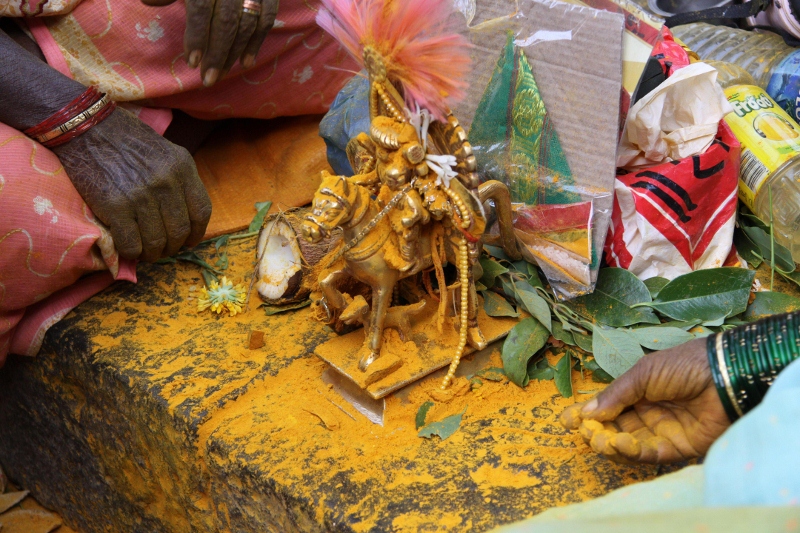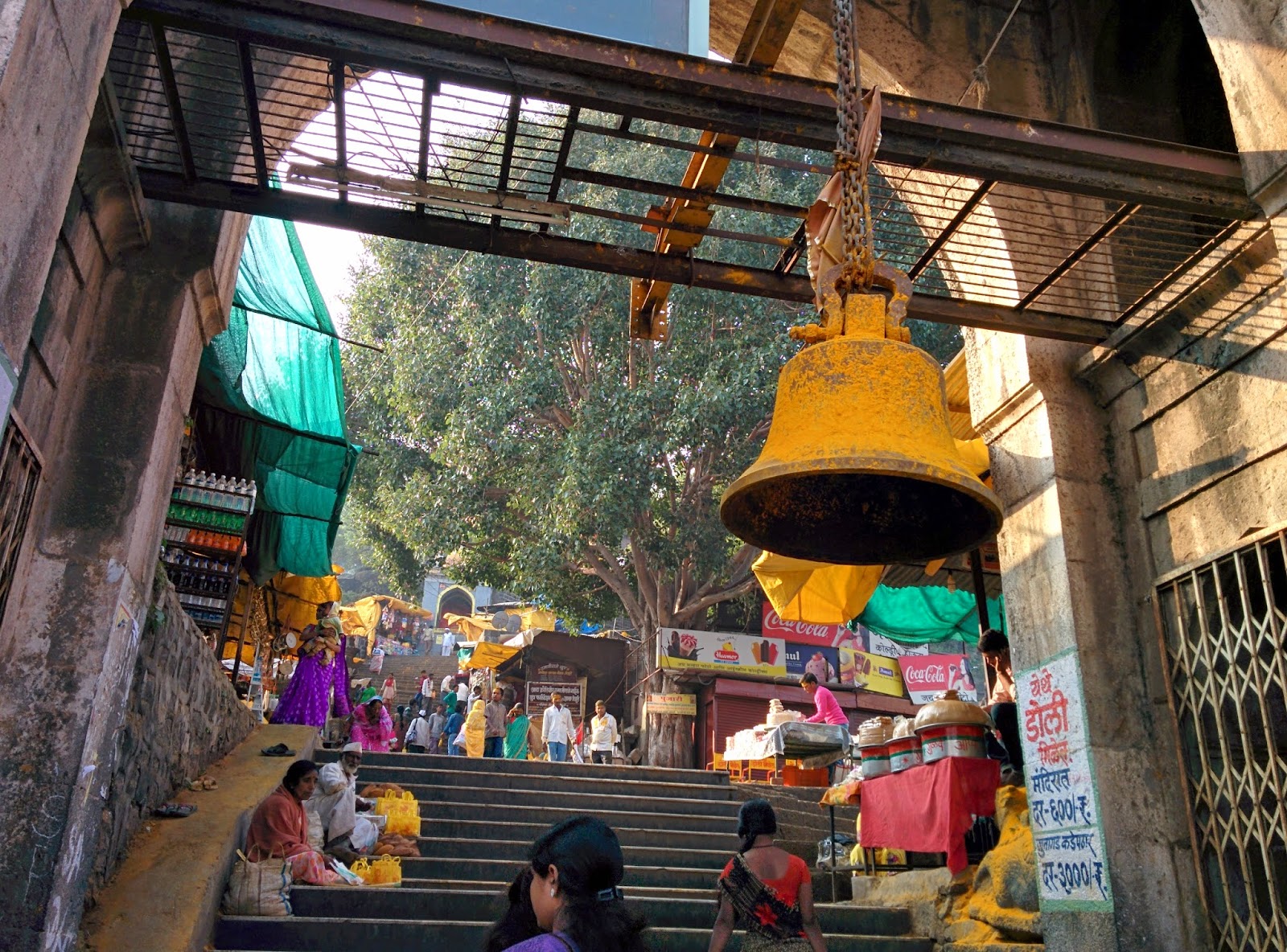Khandoba Temple Pune
About Khandoba Temple
Jejuri is a city and a municipal council in Pune district in the Western Indian state of Maharashtra. It is famous for the main temple of Lord Khandoba.
Khandoba , also known as Martanda Bhairava and Malhari, is a Hindu god, worshipped as a form of Shiva, mainly in the Deccan plateau of India, especially in the states of Maharashtra and Karnataka. He is the most popular Kuladaivat in Maharashtra. He is also the patron deity of warrior, farming, herding as well as some Brahmin (priest) castes, the hunters and gatherers of the hills and forests. The cult of Khandoba has linkages with Vaishnava and Jain traditions, and also assimilates all communities irrespective of caste, including Muslims. Khandoba is sometimes identified with Mallanna of Andhra Pradesh and Mailara of Karnataka. The worship of Khandoba developed during the 9th and 10th centuries from a folk deity into a composite god possessing the attributes of Shiva, Bhairava, Surya and Karttikeya (Skanda). He is depicted either in the form of a Lingam, or as an image of a warrior riding on a bull or a horse. The foremost centre of Khandoba worship is Jejuri in Maharashtra. The legends of Khandoba, found in the text Malhari Mahatmya and also narrated in folk songs, revolve around his victory over demons Mani-malla and his marriages.The name "Khandoba" comes from the words "khadga" (sword), the weapon used by Khandoba to kill the demons, and "ba" (father). "Khanderaya" means "king Khandoba". Another variant is "Khanderao", where the suffix "rao" (king) is used. In Sanskrit texts, Khandoba is known as Martanda Bhairava, a combination of the solar deity Martanda and Shiva's fierce form Bhairava. The name "Mallari" or "Malhari" is split as "Malla" and "ari" (enemy), thus meaning "enemy of the demon Malla". Malhari Mahatmya records Martanda Bhairava, pleased with the bravery of Malla, takes the name "Mallari" (the enemy of Malla). Other variants include Malanna (Mallanna) and Mailara (Mailar). Other names include Khandu Gavda, Mhalsa-kant ("husband of Mhalsa") and Jejurica Vani. Legends of Khandoba generally tell about the battle between the deity and demons Malla and Mani. The principle written source of the legend is Malhari Mahatmya (Mallari Mahatmya), which claims to be from the chapter Kshetra-kanda of the Sanskrit text Brahmanda Purana, but is not included in standard editions of the Purana. R.C. Dhere and Sontheimer suggests that the Sanskrit Mahatmya was composed around 1460-1510 AD, mostly by a Deshastha Brahmin, to whom Khandoba is the family deity. A version is also available in Marathi by Siddhapal Kesasri (1585). Other sources include the later texts ofJayadri Mahatmya and Martanda Vijaya by Gangadhara (1821) and the oral stories of the Vaghyas, bards of the god. The legend tell of the demon Malla and his younger brother Mani, who had gained the boon of invincibility from Brahma, creating chaos on the earth and harassing the sages. When the seven sages approached Shiva for protection after Indra and Vishnu confessed their incapability, Shiva assumed the form (Avatar) of Martanda Bhairava, as the Mahatmya calls Khandoba, riding the Nandi bull, leading an army of the gods. Martanda Bhairava is described as shining like the gold and sun, covered in turmeric, three-eyed, with a crescent moon on his forehead. The demon army was slaughtered by the gods and finally Khandoba killed Malla and Mani. While dying, Mani offers his white horse to Khandoba as an act of repentance and asks for a boon. The boon is that he be present in every shrine of Khandoba, that human-kind is bettered and that he be given an offering of goat flesh. The boon was granted, and thus he was transformed into a demigod. Malla, when asked by the deity if he asked for a boon, asks for the destruction of the world and human-flesh. Angered by the demon's request, Khandoba decapitates him, and his head falls at the temple stairs where it will trampled by devotees' feet. The legend further describes how two Lingas appeared at Prempuri, the place where the demons were killed. Oral stories continue the process of Sanskritization of Khandoba — his elevation from a folk deity to Shiva, a deity of the classical Hindu pantheon — that was initiated by the texts. Khandoba's wives Mhalsa and Banai are also identified with Shiva's classical Hindu wives Parvati and Ganga. Hegadi Pradhan, the minister and brother-in-law of Khandoba and brother of Lingavat Vani Mhalsa. the faithful dog that helps Khandoba kill the demons, the horse given by Mani and the demon brothers are considered avatars of Vishnu,Krishna, Nandi and the demons Madhu-Kaitabha respectively. Other myth variants narrate that Khandoba defeats a single demon named Manimalla, who offers his white horse, sometimes called Mani, to the god. Other legends depict Mhalsa (or Parvati) and Banai or Banu (or Ganga) as futilely helping Khandoba in the battle to collect the blood of Mani, every drop of which was creating a new demon. Finally, the dog of Khandoba swallows all the blood. Sometimes, Mhalsa, or rarely Banai, is described as seated behind Khandoba on the horse and fighting with a sword or spear. The legends portray Khandoba as a king who rules from his fortress of Jejuri and holds court where he distributes gold. Also, king Khandoba goes on hunting expeditions, which often turn into "erotic adventures", and subsequent marriages. Khandoba is also a figure of respect and worship to Muslims, and this affiliation is visible in the style of his temples. He is called Mallu or Ajmat Khan (Rautray) by Muslim devotees, and many times portrayed as being a Muslim himself in this context. The latter is believed to conferred upon by the Mughal invader king Aurangzeb, who was forced to flee from Jejuri by Khandoba's power. Some of these distinguishing Muslim features include his usual appearance as that of a Paá¹hÄn on horseback, one of his wives being a Muslim, and that his horse-keeper is a Muslim in Jejuri. The MÄrtaṇá¸a Vijaya expressly states that his devotees are mainly Muslims. The worship of Khandoba had received royal patronage by Ibrahim II, which consisted of the reinstatement of the annual jatra and the right of pilgrims to perform rituals at the Naldurg temple. Malhari Mahatmya even records Muslims (mleccha) as the god's bhaktas (devotees), who call him as Malluka Pathan or Mallu Khan. In Jejuri, a Muslim family traditionally looks after the horses of the god.
By Air: There are no regular flights from other major cities of the country to Jejuri. Nearest airport is Lohegaon Airport.
By Rail: Jejuri is well connected to other major cities of the country via regular trains.
By Road: Instead of Jejuri you can a get a bus to Pune on regular basis.
- New peshawe lodging.
- Hotel santosh.
- Hotel brahmanand.
- Parvatihill.
- Saras baug.
- Bund garden.
- Vishram baug wada.
Ø Worship-
Though Shiva is worshipped across Maharashtra in his original form, some Maharashtrian communities prefer to worship him in form of his avatars, Khandoba being the most popular. He is the most popular Kuldevta (family deity) in Maharashtra. One of the most widely worshipped gods of the Deccan plateau, Khandoba is considered as "the premier god of Sakama bhakti (wish-granting devotion) and one of the most powerful deities responsive to vows (navas)". He is worshipped by the vast majority of Marathi Hindu people from all strata of that society. He is the patron deity of warrior, farming, herding as well as some Brahmin (priest) castes, the hunters and gatherers of the hills and forests, merchants and kings. The cult of Khandoba in the Deccan principally consists of peasant classes Marathas and Kunabis, shepherd Dhangars, village guards and watchmen Ramoshis — a "Denotified tribe", the former "untouchable" Mahars and Mangs, fisher-folk Kolis, balutedar castes like gardeners (Mali) and tailors (Shimpi), though it also includes of a few Brahmins and even some Muslims. Although Brahmin presence is nominal in his cult, Deshastha Brahmins, as well as the Kokanastha Brahmins - in Nashik and Satara - do worship Khandoba, some imitating the Deshastha Brahmins. The Deshastha Brahmins, Chandraseniya Kayastha Prabhus, as well as the royal families like Gaikwads and Holkars worship Khandoba as their Kuldevta. He is also worshipped by Jains and Lingayats. He is viewed as a "king" of his followers.
.




